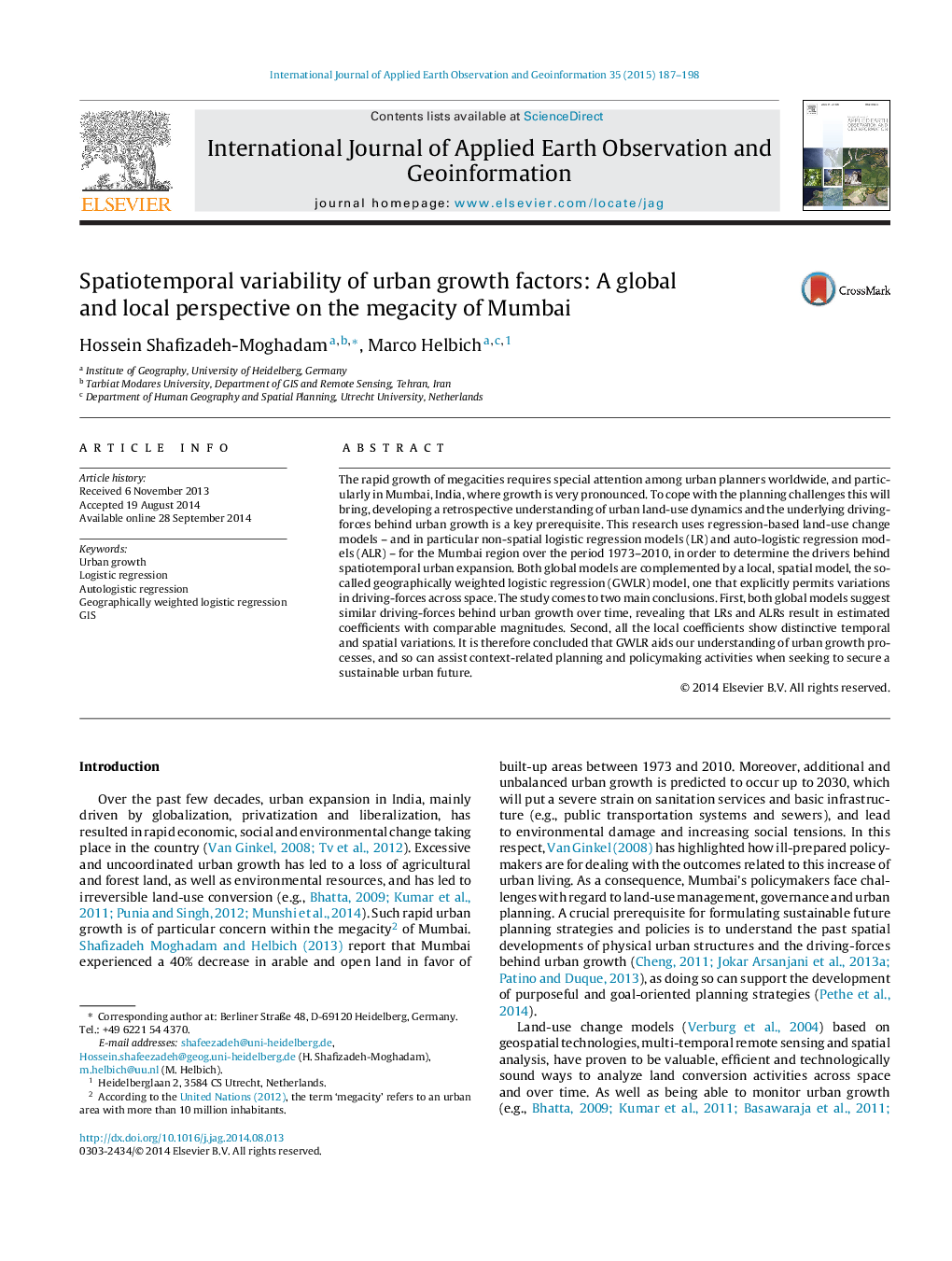| کد مقاله | کد نشریه | سال انتشار | مقاله انگلیسی | نسخه تمام متن |
|---|---|---|---|---|
| 4464713 | 1621823 | 2015 | 12 صفحه PDF | دانلود رایگان |
• Mumbai has been undergoing exceptionally rapid urban growth over the past few decades.
• Global and local statistical land conversion models are examined to explore the driving forces behind urban growth.
• Local spatial models outperform the global aspatial and spatial models used in the study.
• A significant spatial variation among growth drivers is shown, with their influence varying over time.
• The results call for place-based planning strategies to be introduced, to help constrain urban growth.
The rapid growth of megacities requires special attention among urban planners worldwide, and particularly in Mumbai, India, where growth is very pronounced. To cope with the planning challenges this will bring, developing a retrospective understanding of urban land-use dynamics and the underlying driving-forces behind urban growth is a key prerequisite. This research uses regression-based land-use change models – and in particular non-spatial logistic regression models (LR) and auto-logistic regression models (ALR) – for the Mumbai region over the period 1973–2010, in order to determine the drivers behind spatiotemporal urban expansion. Both global models are complemented by a local, spatial model, the so-called geographically weighted logistic regression (GWLR) model, one that explicitly permits variations in driving-forces across space. The study comes to two main conclusions. First, both global models suggest similar driving-forces behind urban growth over time, revealing that LRs and ALRs result in estimated coefficients with comparable magnitudes. Second, all the local coefficients show distinctive temporal and spatial variations. It is therefore concluded that GWLR aids our understanding of urban growth processes, and so can assist context-related planning and policymaking activities when seeking to secure a sustainable urban future.
Journal: International Journal of Applied Earth Observation and Geoinformation - Volume 35, Part B, March 2015, Pages 187–198
